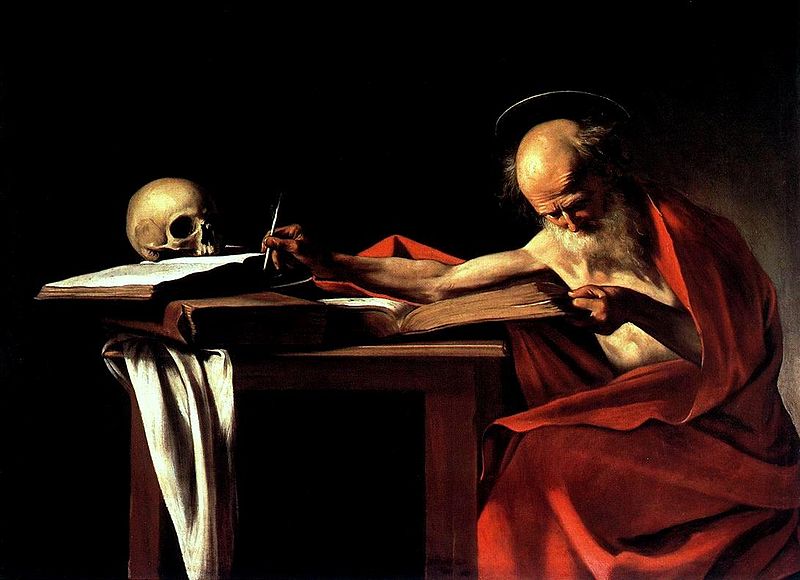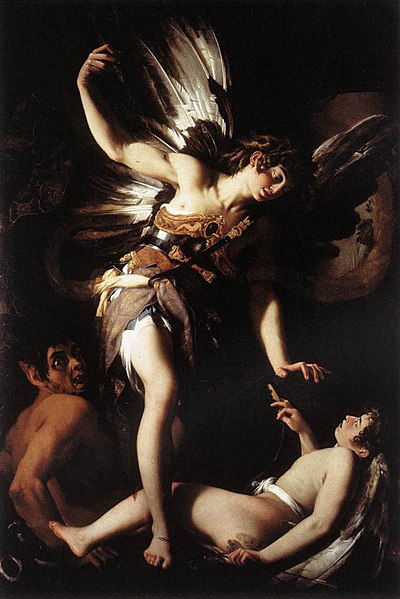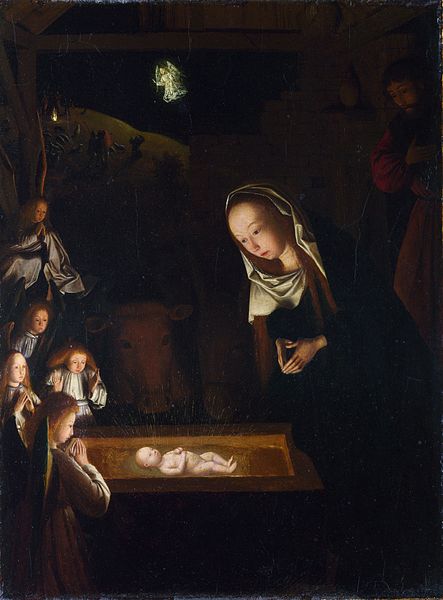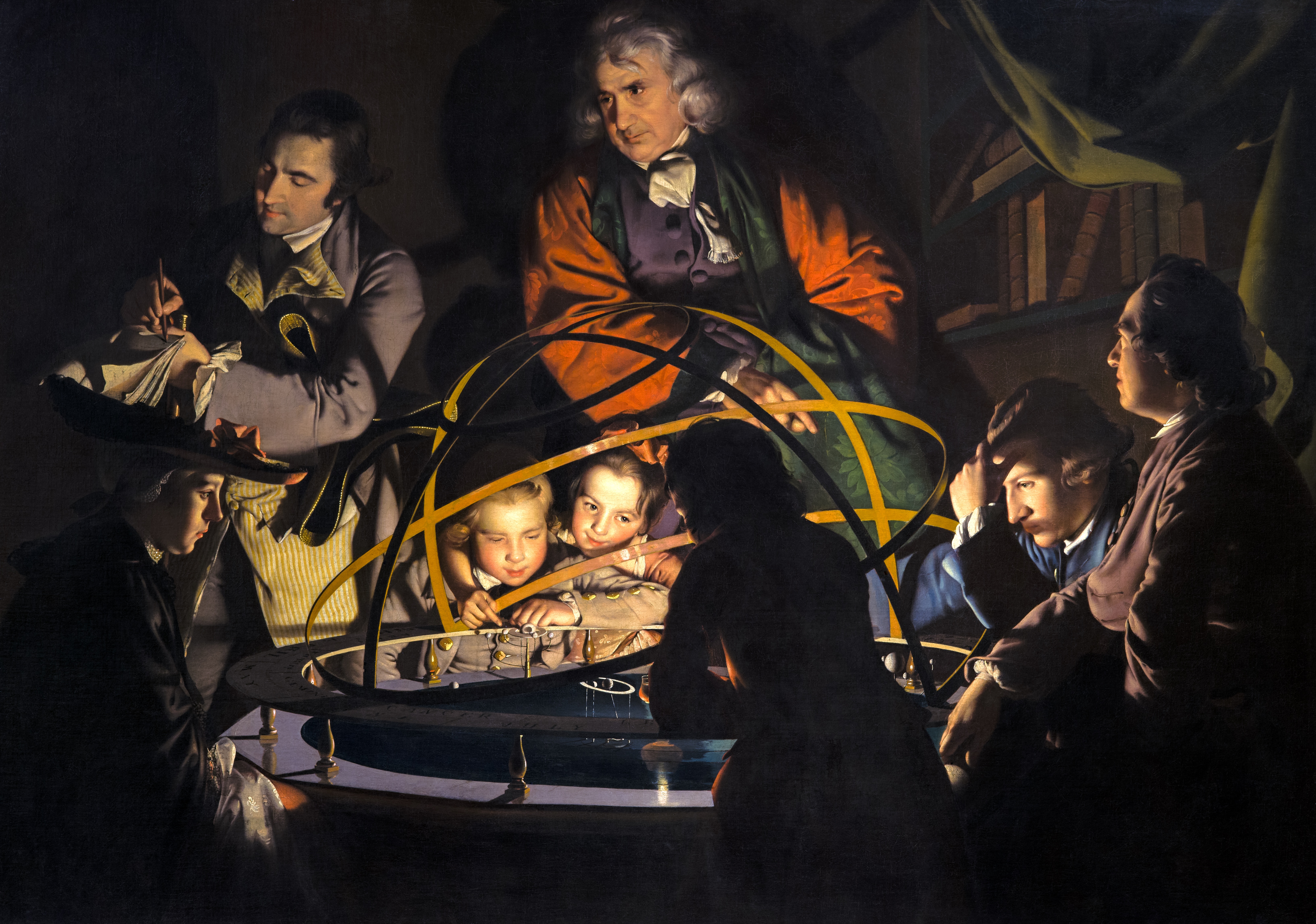Chiaroscuro =light - dark; clair - obscure
(English pronunciation: /ki?ɑ?r??skj??ro?/; Italian: [kjaros?ku?ro]; Italian for light-dark) in art is the use of strong contrasts between light and dark, usually bold contrasts affecting a whole composition. Chiaroscuro is also a technical term used by artists and art historians for using contrasts of light to achieve a sense of volume in modelling three-dimensional objects such as the human body.[1] Similar effects in the lighting of cinema and photography are also often called chiaroscuro.
Further related specialized uses of the term include chiaroscuro woodcut, for coloured woodcuts printed with different blocks, each using a different coloured ink; and chiaroscuro drawing for drawings on coloured paper with drawing in a dark medium and white highlighting.
Saint Jerome, Caravaggio
Sacred and Profane Love, Victoire de l'Amour sacré sur l'Amour profane, tableau de Giovanni Baglione (vers 1602).

The Raising of the Cross, Central Panel, circa
The Matchmaker, Gerard van Honthorst (Gerrit van Honthorst) (4 November 1592 – 27 April 1656)[1] was a Dutch Golden Age painter. Early in his career he visited Rome, where he had great success painting in a style influenced by Caravaggio. Following his return to the Netherlands he became a leading portrait painter.

Wright of Derby: Untitled, known as A Philosopher Giving that Lecture on the Orrery, in which a Lamp is put in place of the Sun or The Orrery